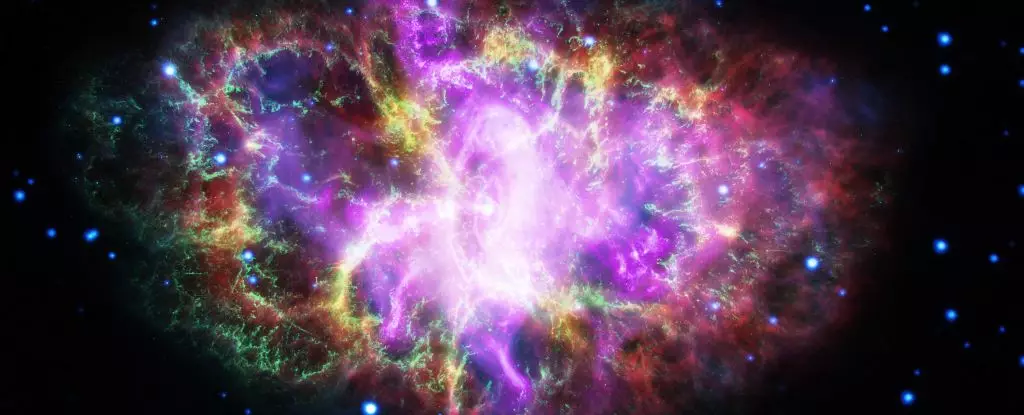Nestled in the heart of San Diego, amid the encroaching glow of city lights, my backyard astrophotography setup stood ready, a small portal into the vastness of the universe. Positioned meticulously, my telescope was trained on the Pinwheel Galaxy—an enigmatic assemblage of stars unfathomably far away. As the first captured image flickered onto my tablet screen, a breath of transparency swept through the air, mingling science with admiration. My wife, Cristina, appeared just in time to witness this cosmic unveiling. “That’s the Pinwheel galaxy,” I explained, and its name sparked a gentle curiosity in her.
The Enigma of Light’s Longevity
Cristina’s question, innocently tethered to the whims of her imagination, set the stage for an exhilarating discourse: “Doesn’t light get tired during such a long journey?” It was a query worthy of contemplation, opening a door to the intricate nature of light—this speedy traveler that spans cosmic distances while seemingly unperturbed by fatigue. As an astrophysicist, my understanding of light’s mysterious properties often challenges conventional perception, leading to profound inquiries about how such energy could traverse millions of light-years unscathed.
Light, as we know, is electromagnetic radiation—a symbiotic dance of electric and magnetic waves traversing through space and time. With no mass to constrain it, light is a unique entity in the cosmos. Objects with mass, be they minuscule particles or colossal ships, are constrained by a universal speed limit, while light zips along at an astonishing rate of 186,000 miles per second, illuminating our darkened skies and sparking wonder.
The Scale of Cosmic Distances
To fully appreciate light’s voyage, one must grasp the enormity of space. Consider this: the Sun, our closest star, is positioned roughly 93 million miles away. The sunlight we observe is not freshly minted; it has journeyed over eight minutes to greet us. In a similar vein, Alpha Centauri, the nearest stellar neighbor, lingers 26 trillion miles away, sending forth its light that arrives at Earth over four years after it has bid adieu. When viewed through this vast aperture of time and distance, each glimmering star becomes a messenger, each ray a precursor of ancient events reverberating across the tapestry of the universe.
However, Cristina’s contemplative question remains stubbornly nagging: how does light maintain its vitality over such grand journeys, seemingly undeterred and energetic? The answer lies within the nature of its travel. While some light does lose energy upon contact with particles, this typically occurs within the confines of thick clouds of interstellar dust or similar obstructions. More often, light traverses the emptiness of space—an almost unending void where minimal collisions allow its energy to remain intact and continuous.
The Mystique of Time and Space
Let’s delve deeper into the conundrum of time as it relates to light. Picture astronauts aboard the sleek International Space Station, sailing at a leisurely 17,000 miles per hour. Their wristwatches record a peculiar phenomenon: time ticks slightly slower for them than for their earthbound counterparts. This is the principle of time dilation, an extraordinary testament to the interplay between velocity, gravity, and time itself.
Now, imagine yourself seated on a photon. In this fantastical scenario, you would witness a radical distortion of time. Reflective of light’s velocity, your existence would unfold in a stasis where time ceases to progress. Outside, the clocks would keep their rhythmic tempo, while your reality would be suspended in that singular moment, creating an ineffable paradox between observers on Earth and the prisoner of light. What’s even more intriguing is the notion that as you approach the speed of light, the very fabric of space compresses, shortening the distance to your destination—a concept that jazzes up our understanding of both light and the universe itself.
The Beauty in Cosmic Connection
This exhilarating exploration comes full circle, invoking the image of the Pinwheel galaxy. To the photon, its journey from the galaxy to my tablet transpires instantaneously; an ethereal dance connecting the stars to the screens of our Earthly existence. To the viewer on planets that spin in a cosmic ballet, however, the journey spans across eons.
On that crisp spring evening, as light from ancient stars became frozen in a snapshot before our eyes, it sparked not only wonder and appreciation but also joy in shared curiosity. It bridged the gap between the knowers and the seekers, offering a tantalizing glimpse into the awe-inspiring mechanisms that govern our universe. A simple inquiry pushed the boundaries of understanding and sparked a delightful fusion of science and companionship, illustrating the timeless allure of exploration, both on the grand scale of the universe and within our own conversations.


Leave a Reply